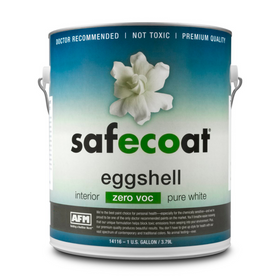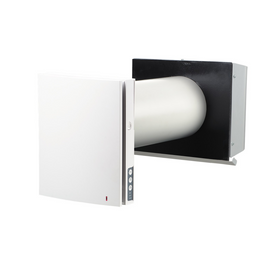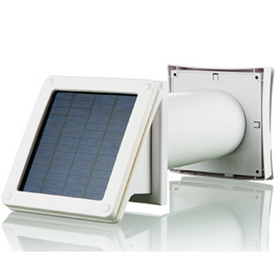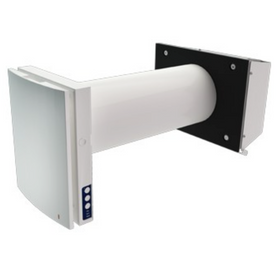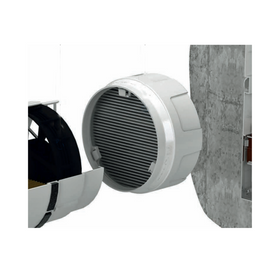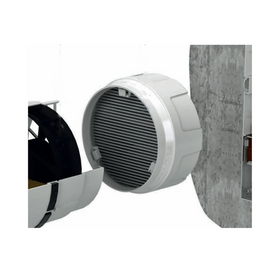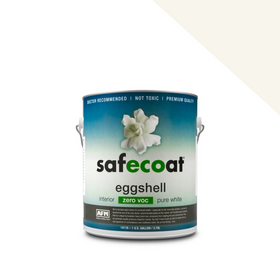
Energy-Efficient Windows Buyers Guide
Last Updated: Feb 8, 2025Windows play an essential role in your sense of well-being and the energy required to heat, cool, and light your house. Large energy-efficient windows placed generously throughout the home can bathe your home in natural sunlight. They can reduce energy demand from artificial lighting during daylight hours. They connect your home with the surrounding natural world and even naturally warm your home with the sun's heat. However, inefficient windows can be a significant source of heat loss and gain for your home. This will cost you money on utility bills and negatively affect your thermal comfort.
Below, we look at the vital function that energy-efficient windows play in the home and offer a complete rundown of your house's most energy-efficient window types.
Table of Contents
- Window Metrics 101
- What is SHGC?
- What Is a Good SHGC Rating?
- How to Convert R-Value to U-Value
- What Does Window U-Value Mean?
- What is a Good Window U-Value?
- What is a Good Window R-Value?
- What Does Window Low-E Mean?
- What Is Glazing on a Window?
- Window Gas Fills
- Window Pane Spacers and Frame Materials
- Window Air Leakage
- How Do Fixed Windows Compare to Operable Windows?
- Popular Types of Window Frames
- The Benefits of High-Efficiency Windows
- Do High-Efficiency Windows Save Money?
- Do High-Efficiency Windows Add Comfort?
- Are High-Efficiency Windows Quiet?
- Tips for Getting Started
- What Are Some Energy-Efficient Windows on the Market Today?
- The bottom line
According to the U.S. Department of Energy, 25-30% of heat loss and gain in new homes occurs through the windows, and that percentage can be even higher in older homes.
Homeowners sometimes have a love/hate relationship with their windows. We love them because they let in the light, connect us to the outdoors, and radiate in the sun's warmth. But in older homes, windows are often one of the hottest parts of the house in the summer and coldest in the winter. A home would undoubtedly be more energy-efficient without any windows, yet we can't live without them.
Windows in a home typically account for 15 to 20% of the surface area of the walls. With the increasing popularity of passive solar design, many homes are increasing the surface area of windows. Some homes are even converting their entire south-facing walls to windows to maximize solar gain.
There are several new window designs and technologies on the market today for homeowners who want the aesthetic beauty of a naturally lit home and energy efficiency. But how do you choose?

Window Metrics 101
Window efficiency is rated by the National Fenestration Rating Council. The technical jargon includes (but is not limited to) three terms:
- SHGC rating
- U-Value/ R-Value, and
- Emissivity

What is SHGC?
SHGC is the abbreviation of "solar heat gain coefficient" which measures the fraction of solar radiation emitted through a window, typically more prominent in southern, hotter climates. SHGC is expressed as a number between 0 and 1 - the lower the SHGC number, the less solar radiation transmitted by the window.
What Is a Good SHGC Rating?
The optimal SHGC rating for your windows will depend on your climate, the home's orientation, and the amount of shade the window receives. For warmer climates where air conditioning is the biggest concern, you would want a lower SHGC. You would want a higher rating for northern climates to allow more of the sun's warmth into your home.
The Efficient Window Collaborative provides additional guidance to help you discover the ideal SHGC rating for your region.
How to Convert R-Value to U-Value
R-Value and U-Value can be converted using the following formula:
R-Value = 1 / U-Value
But can R-Value and U-Value be used interchangeably, or are there any fundamental differences? A U-Value accounts for how energy enters and leaves the material and considers both conduction and radiation. R-Value only accounts for the resistance to heat flow by conduction. Let's take a deeper dive.
What Does Window U-Value Mean?
The windows U-Value (used interchangeably with U-Factor) is another important measurement for the energy efficiency and thermal performance of windows. This rating measures the rate of heat transfer. It is the most basic rating for how well windows insulate, covering the entire window assembly (glass, frame, spacers, etc.).
What is a Good Window U-Value?
The U-Value for windows generally falls between 0.25 and 1.25. The lower the U-Factor, the better the insulative capacities of the window.
What is a Good Window R-Value?
In insulation terms, single pane glass that is only 1/4th of an inch thick will have an expected R-Value of around 0.90. A double-pane window of similar thickness would have an expected R-Value of at least 1.7. This means that you nearly double the insulation value of your windows through this upgrade. Triple pane windows on the market today have an R-Value between 3 and 5, which would increase the energy performance of your windows three to five times over older, single-pane options. Even homes that undergo a complete low carbon retrofit would have a hard time achieving such drastic energy efficiency improvements. Replacing old windows, or at the very least installing window films over less energy-efficient options, is one of the best and most cost-effective strategies to improve the overall energy efficiency and thermal performance of your home.

What Does Window Low-E Mean?
Windows can have a "Low-E" rating—the "e" stands for emissivity, which is the ability of a material to radiate energy and therefore plays a role in a window's thermal performance. Most low-E glass is double-paned and is glazed with a colorless coating. This coating has the unique ability to transmit high amounts of light while simultaneously reflecting heat. Thus, your home will benefit from the added light of windows. At the same time, the exterior heat will not affect the interior temperature during either the summer or the cold in the winter. Windows can come with one or two low-E coatings. One coating can significantly improve energy efficiency while a second will have a marginal improvement. Still, it will darken the window, to the extent that it may not be appealing to a homeowner.
What Is Glazing on a Window?
Window glazing relates to the number of panes in a window assembly. In North America, cost considerations often lead many homeowners to choose double pane windows, which have become the standard. While triple-pane windows might be the best option, double pane options that rely on low emissivity (low-E) glass are a great option. It includes an invisible coating of metal oxide on one of the interior panes.
In much of Europe, triple pane windows are the norm for home construction and can lower the U-Value of a window by up to 50 percent.
Window Gas Fills
You should consider finding window options that fill the spaces with gasses such as argon, xenon, or krypton. It can reduce condensation and increase the thermal performance of the window.
Window Pane Spacers and Frame Materials
The pane spacers and frame materials are just as important as the glass itself when it comes to actual window performance. Pane spacers that contain little or no metal are known as warm edge spacers and can be much more energy-efficient. The frame materials can affect the energy performance of the window. Although wood frames are the most natural and energy-efficient, they require maintenance and can lead to leaks. Composite frames that combine an inner timber frame covered with aluminum or plastic rely on wood while reducing the need for care.

Window Air Leakage
Air leakage in windows plays a role in a home's heat loss. Air leakage is measured as the rate at which air passes through the different joints that connect the window to the wall. The most typical air leakage measurement is the cubic feet of air passing through one square foot of window area per minute (CFM/FT²). The lower the air leakage value, the more energy-efficient the window will be. Most industry standards require a maximum air leakage of 0.3 cfm/ft². However, passive homes attempt to reduce that figure so that it approaches zero.
How Do Fixed Windows Compare to Operable Windows?
Whether the window opens plays a role in a window's thermal performance. "Fixed" windows are windows that do not open. They are often used for large openings and big views. The fact that they are fixed means their thermal properties will be better than if they are operable because less air leakage can occur. Smaller windows are better options for operable windows, as they will be lighter and easier to open and close.
Popular Types of Window Frames
The frame you use for your windows will affect the thermal performance of the window. A few options are outlined below.
Aluminum Window Frames
Aluminum window frames are strong and lightweight; aluminum can have high recycled content and is recyclable. While aluminum frames can be powder coated and aesthetically appealing, they are poor insulators, as are all metals. Aluminum will compromise the overall U-factor of the whole window.
Wood Window Frames
Wood frames are a great natural insulator, through expansion and contraction of the wood can lead to air leakages. Wood frames need conditioning, as condensation can build up and lead to wood rot - which would require window replacement. For conditioning, look for a clear water-based coating that is GreenGuard labeled for low VOC content.
Fiberglass Window Frames
Fiberglass windows have become popular in the last twenty years. A fiberglass window frame is structurally stronger than wood and vinyl, contains around 60% recycled glass, and does not warp. The cost is often between vinyl and wood frame windows. They maintain their appearance and durability over time and meet or exceed federal ENERGY STAR® guidelines. Fiberglass windows are extremely safe and do not off-gas like vinyl windows.
Vinyl (UPVC) Window Frames
Vinyl window frames are typically made from unplasticized polyvinyl chloride (UPVC). Vinyl windows have similar insulating properties of wood. They can be molded to avoid any air leakage around your window frames. These are often the least expensive window frames, but the downside is that they are made out of plastic, and they can lose their color and shine more quickly over time.
The Benefits of High-Efficiency Windows
Do High-Efficiency Windows Save Money?
By switching from single to double pane windows, a homeowner can double the windows' energy efficiency ratings in the home. This will reduce heat and air conditioning usage, saving money year after year. In addition, better windows will minimize condensation, prolonging the window's life - thereby saving money on not having to replace windows in the near future.
Do High-Efficiency Windows Add Comfort?
More efficient, less leaky windows can play a significant role in the home's overall comfort by reducing or eliminating cold drafts and making some areas of the house more livable.
Are High-Efficiency Windows Quiet?
An under-recognized benefit of double or triple pane windows is the additional sound insulation they provide. Outside noise such as automobile traffic or airplane engines is more muffled with better windows, making a home more peaceful.
Tips for Getting Started
If possible, the first and most important thing you can do to improve the windows' energy efficiency is to replace single-pane windows with double or triple pane. For existing homes where window replacement is not an option, make sure to seal the joint areas around your windows through weather stripping and caulking. Heavy curtains or shades can help to minimize drafts related to air leakages.
What Are Some Energy-Efficient Windows on the Market Today?
There are thousands of window options, making it challenging to select the best windows for your home. The best window options for your particular home will largely depend on the climate where your home is located and other contextual considerations. These window manufacturers are great options to improve the energy efficiency of any home.

Milgard Essence Series Wood Windows
Milgard Essence Series windows offer two separate insulating air spaces with Low E glass and dual spacers. It can interrupt wasteful heat flow through the window and thus save on heating and cooling costs. These windows will generally be the most expensive on the market, with an average price of between $550 and $850. However, the expected energy savings, especially homeowners upgrading from single-pane windows, can lead to relatively quick payback periods.

JELD-WEN® Windows
JELD-WEN® Windows, together with Cardinal Glass, offers a high-performance LoE3-366 window with insulating argon gas to lower energy costs by assisting in keeping homes cooler in the summer and warmer in the winter. This technology deflects direct sunlight to help reduce the fading of interior furnishings and prevent condensation.

Ply Gem HP
Ply Gem HP (high performance) Glass windows combine low-E glass with argon gas fill and Warm Edge spacer options for super energy-efficient window options. This company offers R-5 Windows, which provides some of the highest insulation capacity for windows on the market today.
The bottom line
Windows can be the best or worst thing about a home. Upgrading to more efficient windows will significantly affect energy bills and the overall comfort of your home.
Tobias Roberts
Tobias runs an agroecology farm and a natural building collective in the mountains of El Salvador. He specializes in earthen construction methods and uses permaculture design methods to integrate structures into the sustainability of the landscape.





